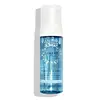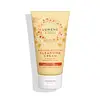What's inside
What's inside
 Benefits
Benefits

 Concerns
Concerns

 Ingredients Side-by-side
Ingredients Side-by-side

Water
Skin ConditioningSodium Laureth Sulfate
CleansingGlycerin
HumectantMethyl Gluceth-20
HumectantBetula Alba Juice
AstringentPEG-200 Hydrogenated Glyceryl Palmate
CleansingPEG-8
HumectantBetaine
HumectantCocamidopropyl Betaine
CleansingPEG-40 Hydrogenated Castor Oil
EmulsifyingCitronellyl Methylcrotonate
MaskingPEG-7 Glyceryl Cocoate
EmulsifyingPanthenol
Skin ConditioningPropanediol
SolventSodium Benzoate
MaskingSodium PCA
HumectantPotassium Sorbate
PreservativeCitric Acid
BufferingPhenoxyethanol
PreservativeEthylhexylglycerin
Skin ConditioningBenzyl Salicylate
PerfumingLinalool
PerfumingCitronellol
PerfumingParfum
MaskingWater, Sodium Laureth Sulfate, Glycerin, Methyl Gluceth-20, Betula Alba Juice, PEG-200 Hydrogenated Glyceryl Palmate, PEG-8, Betaine, Cocamidopropyl Betaine, PEG-40 Hydrogenated Castor Oil, Citronellyl Methylcrotonate, PEG-7 Glyceryl Cocoate, Panthenol, Propanediol, Sodium Benzoate, Sodium PCA, Potassium Sorbate, Citric Acid, Phenoxyethanol, Ethylhexylglycerin, Benzyl Salicylate, Linalool, Citronellol, Parfum
Water
Skin ConditioningPEG-7 Glyceryl Cocoate
EmulsifyingGlycerin
HumectantSodium Cocoamphoacetate
CleansingPolyglyceryl-10 Laurate
Skin ConditioningCocamidopropyl Betaine
CleansingLauryl Glucoside
CleansingRubus Chamaemorus Fruit Juice Extract
HumectantAcrylates/C10-30 Alkyl Acrylate Crosspolymer
Emulsion StabilisingDisodium Lauryl Sulfosuccinate
CleansingSodium Laureth Sulfate
CleansingSodium Cocoyl Isethionate
CleansingZea Mays Starch
AbsorbentSodium Cocoyl Glutamate
CleansingSodium Lauryl Glucose Carboxylate
CleansingCetearyl Alcohol
EmollientSodium Benzoate
MaskingPropanediol
SolventPotassium Sorbate
PreservativeHydrogenated Castor Oil
EmollientPhenoxyethanol
PreservativeTitanium Dioxide
Cosmetic ColorantSodium Hydroxide
BufferingEthylhexylglycerin
Skin ConditioningParfum
MaskingWater, PEG-7 Glyceryl Cocoate, Glycerin, Sodium Cocoamphoacetate, Polyglyceryl-10 Laurate, Cocamidopropyl Betaine, Lauryl Glucoside, Rubus Chamaemorus Fruit Juice Extract, Acrylates/C10-30 Alkyl Acrylate Crosspolymer, Disodium Lauryl Sulfosuccinate, Sodium Laureth Sulfate, Sodium Cocoyl Isethionate, Zea Mays Starch, Sodium Cocoyl Glutamate, Sodium Lauryl Glucose Carboxylate, Cetearyl Alcohol, Sodium Benzoate, Propanediol, Potassium Sorbate, Hydrogenated Castor Oil, Phenoxyethanol, Titanium Dioxide, Sodium Hydroxide, Ethylhexylglycerin, Parfum
 Reviews
Reviews

Ingredients Explained
These ingredients are found in both products.
Ingredients higher up in an ingredient list are typically present in a larger amount.
Cocamidopropyl Betaine is a fatty acid created by mixing similar compounds in coconut oil and dimethylaminopropylamine, a compound with two amino groups.
This ingredient is a surfactant and cleanser. It helps gather the dirt, pollutants, and other impurities in your skin to be washed away. It also helps thicken a product and make the texture more creamy.
Being created from coconut oil means Cocamidopropyl Betaine is hydrating for the skin.
While Cocamidopropyl Betaine was believed to be an allergen, a study from 2012 disproved this. It found two compounds in unpure Cocamidopropyl Betaine to be the irritants: aminoamide and 3-dimethylaminopropylamine. High-grade and pure Cocamidopropyl Betaine did not induce allergic reactions during this study.
Learn more about Cocamidopropyl BetaineEthylhexylglycerin (we can't pronounce this either) is commonly used as a preservative and skin softener. It is derived from glyceryl.
You might see Ethylhexylglycerin often paired with other preservatives such as phenoxyethanol. Ethylhexylglycerin has been found to increase the effectiveness of these other preservatives.
Glycerin is already naturally found in your skin. It helps moisturize and protect your skin.
A study from 2016 found glycerin to be more effective as a humectant than AHAs and hyaluronic acid.
As a humectant, it helps the skin stay hydrated by pulling moisture to your skin. The low molecular weight of glycerin allows it to pull moisture into the deeper layers of your skin.
Hydrated skin improves your skin barrier; Your skin barrier helps protect against irritants and bacteria.
Glycerin has also been found to have antimicrobial and antiviral properties. Due to these properties, glycerin is often used in wound and burn treatments.
In cosmetics, glycerin is usually derived from plants such as soybean or palm. However, it can also be sourced from animals, such as tallow or animal fat.
This ingredient is organic, colorless, odorless, and non-toxic.
Glycerin is the name for this ingredient in American English. British English uses Glycerol/Glycerine.
Learn more about GlycerinParfum is a catch-all term for an ingredient or more that is used to give a scent to products.
Also called "fragrance", this ingredient can be a blend of hundreds of chemicals or plant oils. This means every product with "fragrance" or "parfum" in the ingredients list is a different mixture.
For instance, Habanolide is a proprietary trade name for a specific aroma chemical. When used as a fragrance ingredient in cosmetics, most aroma chemicals fall under the broad labeling category of “FRAGRANCE” or “PARFUM” according to EU and US regulations.
The term 'parfum' or 'fragrance' is not regulated in many countries. In many cases, it is up to the brand to define this term.
For instance, many brands choose to label themselves as "fragrance-free" because they are not using synthetic fragrances. However, their products may still contain ingredients such as essential oils that are considered a fragrance by INCI standards.
One example is Calendula flower extract. Calendula is an essential oil that still imparts a scent or 'fragrance'.
Depending on the blend, the ingredients in the mixture can cause allergies and sensitivities on the skin. Some ingredients that are known EU allergens include linalool and citronellol.
Parfum can also be used to mask or cover an unpleasant scent.
The bottom line is: not all fragrances/parfum/ingredients are created equally. If you are worried about fragrances, we recommend taking a closer look at an ingredient. And of course, we always recommend speaking with a professional.
Learn more about ParfumPeg-7 Glyceryl Cocoate is created from polyethylene glycol and fatty acids from coconut oil.
It is a synthetic polymer with emulsifying and cleansing properties.
As an emulsifier, Peg-7 Glyceryl Cocoate prevents ingredients such as oils and water from separating. It also helps rinse away oils, dirt, and pollutants from skin.
Peg-7 Glyceryl Cocoate may not be fungal acne safe. It can also dry out skin.
Learn more about PEG-7 Glyceryl CocoatePhenoxyethanol is a preservative that has germicide, antimicrobial, and aromatic properties. Studies show that phenoxyethanol can prevent microbial growth. By itself, it has a scent that is similar to that of a rose.
It's often used in formulations along with Caprylyl Glycol to preserve the shelf life of products.
Potassium Sorbate is a preservative used to prevent yeast and mold in products. It is commonly found in both cosmetic and food products.
This ingredient comes from potassium salt derived from sorbic acid. Sorbic acid is a natural antibiotic and effective against fungus.
Both potassium sorbate and sorbic acid can be found in baked goods, cheeses, dried meats, dried fruit, ice cream, pickles, wine, yogurt, and more.
You'll often find this ingredient used with other preservatives.
Learn more about Potassium SorbatePropanediol is an all-star ingredient. It softens, hydrates, and smooths the skin.
It’s often used to:
Propanediol is not likely to cause sensitivity and considered safe to use. It is derived from corn or petroleum with a clear color and no scent.
Learn more about PropanediolSodium Benzoate is a preservative. It's used in both cosmetic and food products to inhibit the growth of mold and bacteria. It is typically produced synthetically.
Both the US FDA and EU Health Committee have approved the use of sodium benzoate. In the US, levels of 0.1% (of the total product) are allowed.
Sodium benzoate works as a preservative by inhibiting the growth of bacteria inside of cells. It prevents the cell from fermenting a type of sugar using an enzyme called phosphofructokinase.
It is the salt of benzoic acid. Foods containing sodium benzoate include soda, salad dressings, condiments, fruit juices, wines, and snack foods.
Studies for using ascorbic acid and sodium benzoate in cosmetics are lacking, especially in skincare routines with multiple steps.
We always recommend speaking with a professional, such as a dermatologist, if you have any concerns.
Learn more about Sodium BenzoateSodium Laureth Sulfate (SLES) is a foaming, cleansing, and emulsifying ingredient. It is created from palm kernel oil or coconut oil. SLES is not the same as sodium lauryl sulfate. It is much milder and less likely to irritate.
SLES helps create foam in personal products. It also prevents ingredients from separating, helping to elongate the shelf life.
Sodium Laureth Sulfate is a type of sulfate. It can be drying. We recommend speaking with a professional about using this ingredient if you have concerns.
Learn more about Sodium Laureth SulfateWater. It's the most common cosmetic ingredient of all. You'll usually see it at the top of ingredient lists, meaning that it makes up the largest part of the product.
So why is it so popular? Water most often acts as a solvent - this means that it helps dissolve other ingredients into the formulation.
You'll also recognize water as that liquid we all need to stay alive. If you see this, drink a glass of water. Stay hydrated!
Learn more about Water